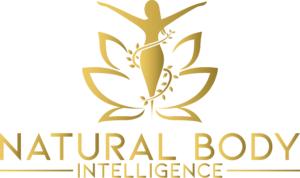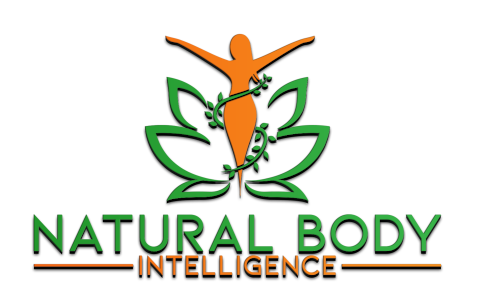Recognising the Signals + A Balanced Path Forward
We live in an age of overwhelming stimuli — in our food, environment, relationships, work, and even our inner mental world. Over time, small stresses accumulate, and sometimes the body begins to show signs that it’s struggling under the burden. In Natural Body Intelligence, we view those signs not as defects or punishment, but as messages: gentle (or not-so-gentle) signals that certain systems need support.
Below, you’ll find:
- A refined overview of signs your body may benefit from a detox-style reset
- What’s really going on physiologically
- Guidance on safe, sustainable practices (and cautions about extreme cleanses)
- A sample framework you can follow
- How this fits into the NBI philosophy
Disclaimer: This article is for educational purposes. It is not a substitute for professional medical care. If you have health conditions (e.g. diabetes, liver or kidney disease, autoimmune disorders) or are on medications, consult your healthcare provider before making drastic changes.
1. Common Warning Signs: When Your Body Speaks
Here are the signals many people notice before they consciously “detuct” — ones you already had in your list, polished for clarity and flow:
| Sign | What it might reflect |
|---|---|
| Chronic fatigue or low vitality | Your energy systems (adrenals, mitochondrial function) may be taxed. |
| Frequent headaches, brain fog, loss of mental clarity | Sluggish metabolic and detox pathways or nutrient deficiencies. |
| Persistent skin issues, poor complexion, breakouts | Skin often becomes an “overflow valve” when internal elimination is overloaded. |
| Frequent colds, infections, overuse of medications | The immune system is on constant alert and may be strained. |
| Digestive discomfort or irregularity | Poor gut motility, imbalanced microbiome, or low fiber intake. |
| Diet dominated by processed foods, refined sugars, fried foods | You’re feeding the internal load rather than alleviating it. |
| Regular intake of stimulants, alcohol, smoking, medications | These challenge the liver, kidneys, and detox organs. |
| High exposure to environmental toxins (air pollution, chemicals, household cleaners) | External load adds to internal burden. |
| Excess body weight or feeling “heavy” | Stored reserves (including excess fat) may reflect systemic imbalance. |
| Persistent low mood, emotional instability, lack of enthusiasm | Chronic stress or metabolic pressure often shows up emotionally. |
| Persistent bad breath or body odour | Suboptimal elimination (through liver or gut) may manifest in scent. |
If you identify with three or more of these on a regular basis (for several weeks or months), it’s reasonable to consider a gentle detoxification reset — not as a band-aid, but as a supportive phase.
2. What’s Really Going On — The Science Behind “Detox”
To do this right, it helps to understand what “detox” really means (and what the body is doing all along).
The body already detoxifies — that’s its job
Your liver, kidneys, lungs, skin, and digestive system work 24/7 to neutralize, transform, and eliminate waste and foreign compounds. This process is often termed biotransformation: reactive compounds are altered (Phase I and Phase II liver enzyme pathways) so that they become water-soluble or otherwise excretable. PubMed+3Medical News Today+3Healthline+3
When we talk about needing a “detox,” what we really mean is supporting those systems when they’re under stress, overloaded, or inefficient — not magically “rinsing out” everything in the body.
The pitfalls of extreme cleanses
Because the term “detox” can be misused or oversold, many commercial detox programs promise dramatic outcomes (rapid weight loss, toxin purge, total cellular reset). Yet:
- Most clinical studies on detox diets are small, poorly designed, or lack long-term data. Open Access Government+3NCCIH+3PubMed+3
- Some detox diets may lead to nutrient deficiencies, electrolyte imbalances, dehydration, digestive distress (especially when using laxatives or enemas), or interference with medications. Harvard Health+2UCLA Health+2
- The body doesn’t store undefined “toxins” waiting to be flushed — the concept of “muck” or “sludge” is largely metaphorical in wellness marketing. Johns Hopkins Medicine+3Wikipedia+3NCCIH+3
- Some supplements marketed as “liver cleansers” or “detox boosters” lack clinical evidence or even cause harm. Johns Hopkins Medicine+2UPMC HealthBeat+2
In short: detoxes can feel good, create a reset, or shift habits — but they are not a substitute for healthy function. The goal is support, not shock.
3. How to Detox Safely — Supportive Steps (Not “Quick Fixes”)
Here’s a NBI-aligned, evidence-informed protocol for a gentle detox period. You can adjust based on your health, time, and needs.
A. Preparation & Mindset
- Decide your intention: Clarify why you want to detox (energy, clarity, reset habits).
- Time your detox: Choose a period with lighter commitments (weekend, vacation) so you’re not under too much stress.
- Set gentle goals, not extremes: This isn’t about deprivation, but about resetting and supporting.
- Inform your body gradually: Don’t switch from a heavy diet to extreme fasting overnight.
B. Dietary Habits
| Step | Action | Rationale / Notes |
|---|---|---|
| Hydration | Aim for clean water (add lemon, cucumber slices) — 30–40 ml per kg body weight (adjust for activity) | Supports the kidneys and helps flush soluble waste. |
| Increase fresh produce | Focus on raw or lightly steamed vegetables, leafy greens, and colorful fruits | Rich in antioxidants, fiber, and phytochemicals. |
| Emphasise detox-supportive foods | Cruciferous veggies (broccoli, kale), garlic, onions, berries, citrus, turmeric | Many of these foods upregulate detox enzyme activity. |
| Promote gut health | Include prebiotic fiber (onion, garlic, leeks) + fermented foods (kefir, sauerkraut, kombucha) | Healthy microbiome supports removal of toxins from the gut. |
| Lean, clean protein | Use moderate amounts of plant-based protein (lentils, beans, tempeh) or clean animal sources if your system tolerates them | Required for enzyme function in detox phases. |
| Eliminate or reduce | Processed foods, refined sugar, trans fats, excess caffeine, alcohol, and artificial additives | These are stressors on detox systems. |
C. Movement & Circulation
- Exercise daily — even gentle movement like walking, yoga, or stretching helps stimulate lymph flow and circulation.
- Sweat intentionally — saunas, steam rooms, brisk walks — but don’t push to dehydration.
- Dry brushing or lymphatic massage — helps move interstitial fluids and support elimination through the skin.
D. Rest, Sleep & Stress Management
- Prioritise 7–9 hours of deep sleep — many detox processes (especially in the brain) occur during deep sleep cycles.
- Practice deep breathing, meditation, or gentle pranayama — calm the nervous system, reduce cortisol, and support elimination.
- Digital detox — reduce screen exposure, blue light, and mental clutter to support mental rest.
E. Environmental & Lifestyle Considerations
- Reduce exposure to toxins: switch to natural cleaning and body-care products, avoid plastics with BPA, use filtered water/air purifiers, minimize synthetic fragrance use.
- Optimize indoor air — ventilate spaces, add houseplants or air purifiers.
- Keep a “toxicity journal” — note when you feel worse after exposure so you can adjust your environment.
- Emotional detox — journal, release grudges, therapy, breathwork. Psychological stress contributes to physiological load.
F. Gentle Transition Back
When your detox period ends:
- Reinstate foods gradually (e.g. gluten, dairy) — see how your body responds.
- Continue many of the supportive habits (hydration, sleep, movement) as ongoing practices.
- Reflect on which choices you want to keep as your “baseline” lifestyle.
4. Sample 7-Day Reset Blueprint (Beginner Version)
Here’s a modest outline you can adapt for your audience. It’s not radical; it’s a reset.
| Day | Focus | Key Habits |
|---|---|---|
| Day 1 (Preparation) | Gentle lightening | Remove processed foods; extra water; light walks |
| Day 2 | Transitional cleansing | Increase veggies, support gut, extra rest |
| Day 3 | Core detox phase | Emphasize detox foods, moderate movement, sauna or steam if available |
| Day 4 | Deep support | Continue strong nourishing plant foods, rest deeply, journaling |
| Day 5 | Rebalance | Reintroduce gentle protein, monitor energy, maintain movement |
| Day 6 | Rebuilding | Eat a full but clean balanced diet, integrate habits |
| Day 7 (Integration) | Reflection + planning | Decide which habits to keep, ease fully back |
⚠️ Note: Adapt this blueprint for your audience’s fitness, health status, and prior diet.
5. How This Aligns with NBI (Natural Body Intelligence)
- Detox is cyclical, not punitive: The goal isn’t deprivation but re-attunement.
- The body is innately intelligent: We don’t impose “detox”; we support the body’s own wisdom.
- Gradual shifts endure: Real change emerges when new habits (better food, rest, mindset) replace old ones.
- Feedback over idealism: Encourage body listening — what feels right for one person may feel too harsh for another.
- Wholeness matters: Mind, body, environment — detoxing is not purely biochemical but a full-spectrum reset.


